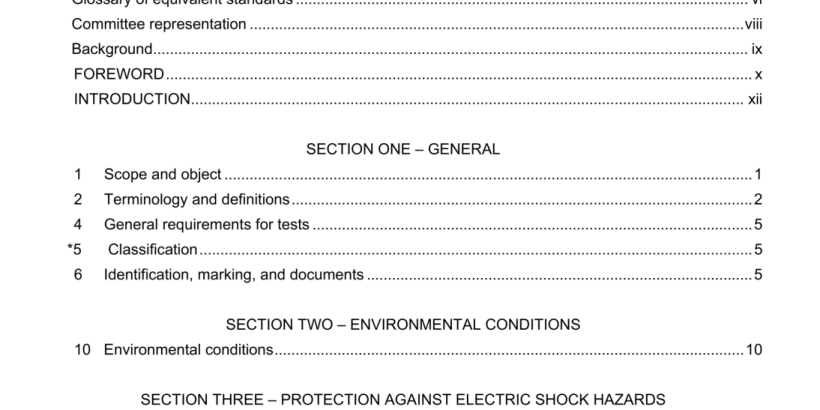ANSI AAMI DF80-2003 pdf download
ANSI AAMI DF80-2003 pdf download.Medical electrical equipment
1.1 Scope
Adition: This Particular Standard specifies requirements for the safety of CARDIAC DEFIBRILLATORS as defined in 2.1.101, hereinafter referred to as EQUIPMENT. This Particular Standard does not apply to implantable defibrillators, remote control DEFIBRILLATORS, or separate stand alone CARDIAC MONITORS (which are standardized by IEC 60601-2-27). Cardiac monitors which use separate ECG monitoring electrodes are not within the scope of this standard unless they are used as the sole basis for AED rhythm recognition detection or beat detection for synchronized cardioversion. Defibrillation waveform technology is evolving rapidly. Published studies indicate that the effectiveness of waveforms varies. The choice of a particular waveform including waveshape, delivered energy, efficacy, and safety has been specifically excluded from the scope of this standard. . However, due to the critical importance of the therapeutic waveform, comments have been added to the rationale which address considerations in waveform selection. This specification defines minimum pad electrode performance. It does not ensure compatibility of a particular pad electrode-defibrillator combination nor does it ensure an acceptable level of performance. While it provides reasonable assurance of safe performance, it does not ensure compatibility of a particular pad electrode-defibrillator combination. As such, the consumer should request compatibility test information from the manufacturer(s).
For brevity, Part 1 is referred to in this Particular Standard either as the “General Standard” or as the “General Requirement(s).” The numbering of sections, clauses and subclauses of this Particular Standard corresponds with that of the General Standard. The changes to the text of the General Standard are specified by the use of the following words:, “Replacement”means that the clause or subclause of the General Standard is replaced completely by the text of this Particular Standard. “Addition” means that the text of this Particular Standard is additional to the requirements of the General Standard. “Amendment”means that the clause or subclause of the General Standard is amended as indicated by the text of this Particular Standard. Subclauses or figures which are additional to those of the General Standard are numbered starting from 101, additional annexes are lettered AA, BB, etc., and additional items aa), bb), etc. The term“this Standard” is used to make reference to the General Standard and this Particular Standard taken together. Where there is no corresponding section, clause or subclause in this Particular Standard, the section, clause,or subclause of the General Standard, although possibly not relevant, applies without modification. Where it is intended that any part of the General Standard, although possibly relevant, is not to be applied, a statement to that effect is given in this Particular Standard. The requirements of this Particular Standard take priority over those of the General Standard.
A shockable simulated PATIENT rhythm signal as defined by the manufacturer, is applied to the SEPARATE MONITORING ELECTRODES or the DEFIBRILLATOR ELECTRODES. The visual or audible instructions given by the DEFIBRILLATOR are followed. The charge time is measured from RRD activation (for 101.3a) and 101.4 a)) or initial power on (for 101.3 b) and 101.4 b)) to ready for discharge. In the case of INTERNALLY POWERED EQUIPMENT, the test shall start with a new and fully charged battery. In the case of such EQUIPMENT also capable of charging the ENERGY STORAGE DEVICE when connected to the SUPPLY MAINS or to a separate battery charger, compliance is checked when the EQUIPMENT is connected to the SUPPLY MAINS or to the battery charger. In cases with a discharged or missing battery, verify performance is consistent with the markings provided as required by 6.1 bb). In case of a DEFIBRILLATOR with non-rechargeable batteries, the test shall start with a battery depleted by the delivery of the number of charge/discharge cycles specified by the manufacturer, or when the EQUIPMENT indicates that the battery needs replacement, whichever comes first. For EQUIPMENT with a pre-programmed energy setting sequence, not changeable by the OPERATOR or USER, the requirement for depletion of batteries with the delivery of maximum energy discharges is relaxed to the number of discharges at the pre-programmed energy setting sequence. In case of pre- programmed energy setting sequence being changeable by the OPERATOR or USER, the requirement for depletion of batteries with the delivery of maximum energy discharges is relaxed to the number of discharges at the worst case energy setting sequence selectable.
